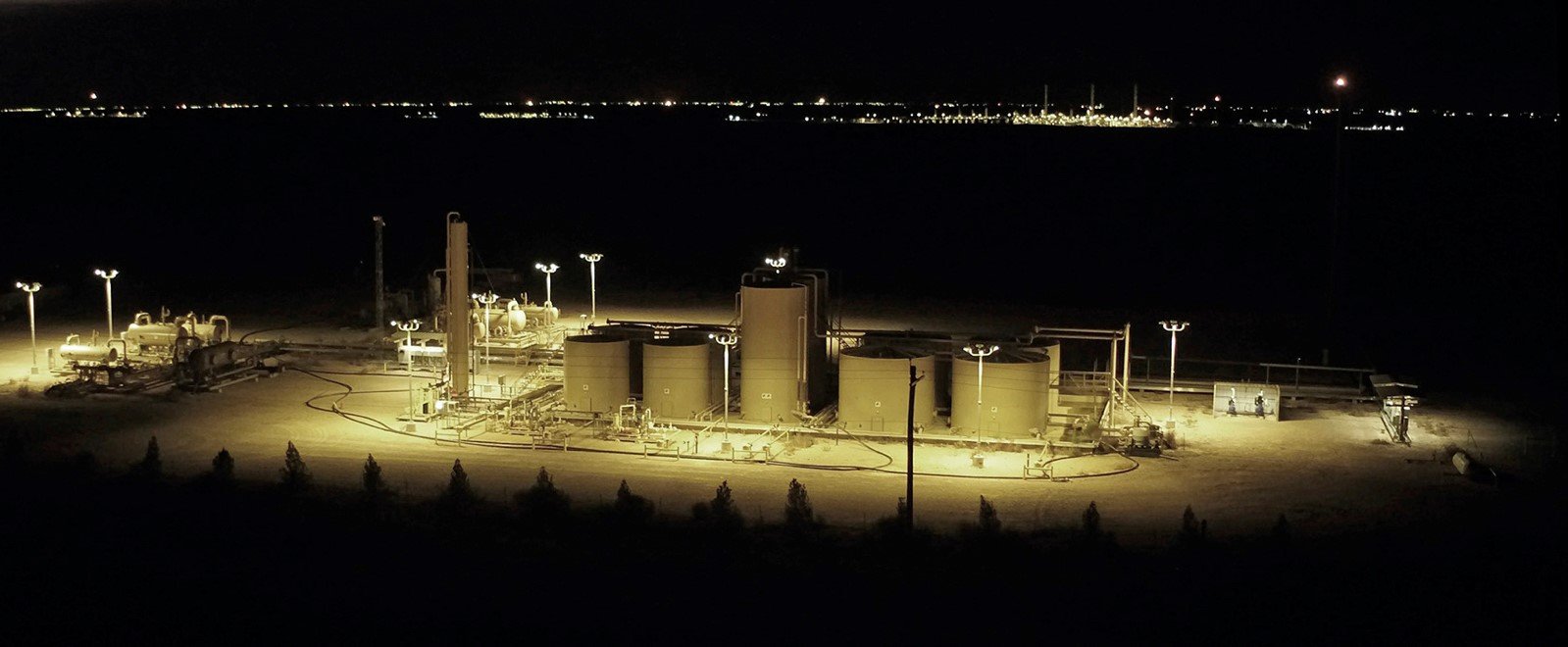Light Pollution, Safety, and Security
Poorly designed lighting has serious impacts on the safety and security of homes, businesses, roads, and public spaces. The problem is made worse by common misconceptions about what safe lighting is supposed to look like. The goal of any lighting should be to increase visibility when and where it is needed, but many fixtures cast excessive light in all directions to the detriment of visibility.
Brighter doesn’t always mean safer
Light at night is necessary to safely identify hazards and navigate spaces, but just because a light is bright doesn’t mean you are seeing better.
Our eyes naturally adjust to ambient light levels. Overly bright lighting forces our eyes to become less sensitive, meaning lighting past a certain level doesn’t help with visibility but can actually put you at a disadvantage. As soon as you look away from the area under an overly bright light, you must wait for your eyes to readjust- which can take several minutes.
The Stripes gas station pictured used excessively bright lighting. According to lighting standards set by the American Medical Association, the light was bright enough to perform surgery under! Drivers would spend several minutes under the light as they filled up their cars, only to be completely blind once they drove off. After Stripes decreased the intensity to more appropriate levels, they not only improved safety but also saved over 75% on their energy bill.
Research by the Illuminating Engineering Society on roadway lighting found that once a sufficient level of illumination is reached, around 1 foot-candle for most roads, additional light does not result in any safety benefit. Another study found that brighter roadway lighting can increase the accident rate.
Glaring Problems
Intense lights without proper shielding can create blinding or annoying glare. If the source of the light is exposed, your eyes will try to adjust to the intensity of the source rather than what you are trying to see. You’ve probably experienced this while driving at night with oncoming traffic.
The roadway in the image is marked by small, point-like lights mounted low to the ground. The brighter and more compact the light source is, the more glare it will produce. Instead of illuminating the road, the lights in this example create visual clutter. Rather than increase visibility, the lighting in this example is less safe than having no light at all. Road reflectors used along most public highways would have been more effective and much cheaper.
Glare is also related to the color of the light. The more white or blue the light is, the more discomforting glare it causes. This affect gets worse with age, as light scatters more within the internal structure of the eye to contribute to disabling or uncomfortable glare. Softer, more yellow or amber colors, when properly shielded, can decrease perceived glare considerably.
In this example, a bright LED light is aimed at the base of a staircase in an industrial facility. The light appears blinding to someone looking upwards to climb the stairs and puts very little light on the stairs themselves, creating a safety hazard. Horiztonally aimed floodlights tend to only create good visibility when facing away from the foodlight. A light should create good visibility whether you are looking towards or away from it.
In the example below, an oil and gas facility adjusted their lighting to be shielded, an appropriate intensity, and a soft yellow color. The result was less glare, more light on the ground, and increased safety- all while also reducing light pollution and saving energy.
Lighting and Crime
It’s often considered “common sense” that bright lighting deters crime. But despite multiple scientific studies, there has never been any conclusive evidence that brighter lighting leads to less crime. In most cases lighting has no clear effect on crime, and in some situations brighter lighting has been shown to increase crime. Most crimes occur during daytime hours, with home break-ins being most likely between the hours of 10am and 3pm according to FBI crime statistics. While light may make you feel safer, the reality is that criminals can often benefit more from bright lighting than you do.
To many people this feels intuitively wrong. Criminals prefer to hide in the dark, right? To understand why lighting at night is not a strong deterrence against crime, imagine yourself in the shoes of a criminal. You prowl the streets late at night looking for a home to burgle. You walk down a brightly lit street and spot a home with a floodlight on in the backyard. As you approach, you see someone has carelessly left expensive power tools out in the yard. Because the lighting is bright you can see that there are no cameras or witnesses around, and you can see the best path in and out for a quick getaway. You hop the fence, grab the tools, and calmly walk away before anyone is the wiser.
Now consider a dimly lit area. As a criminal, you aren’t sure if there are cameras or witnesses nearby. You walk down the street but can’t identify any easy targets. You wonder if there are valuables in a backyard, but in order to know you need to shine a flashlight into the back yard, drawing attention and alerting the homeowners of unusual activity outside.
The best approach to avoid being a victim of crime is to not make yourself an obvious target. Hiding your valuables, locking your doors, and travelling in groups have all been shown to be effective strategies. If crime is a concern, consider shielded motion detector lights and infrared cameras. These strategies won’t illuminate an area to the criminal’s benefit while still deterring crime and making it easier to catch the criminals.







